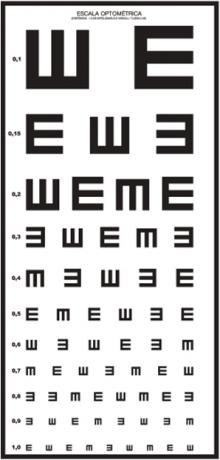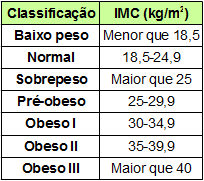In 2012, the Ministry of Health promoted a campaign in more than 2,500 municipalities, in several public schools in the country, between March 5th and 9th, with the theme: Prevention of obesity in childhood and adolescence. This campaign had the objective of promoting several actions in order to prevent and control obesity in students aged between 5 and 19 years.
THE Health at School Mobilization Week will have a second edition in 2013, between the days March 11th and 15th. The issue of obesity remains one of the main themes of this mobilization by the Ministry of Health, but this time, another important point that will be addressed will be the eye health of Brazilian public school students.
The launch of this mobilization took place on Monday (11/03/2013) at the Elementary Education Center in Brasília. On the occasion, the Minister of Health, Alexandre Padilha, signed an ordinance enabling the Federal District Government to Look Brazil Project, which provides for actions aimed at ophthalmological care and comprehensive treatment in this area.
Vision problems greatly hinder students' academic performance, so parents and teachers should always be on the lookout to see if students have the following symptoms:
- Headache;
- Watery and irritated eyes;
- tiltspersistent headache;
- Continuous blinking of the eyes;
- Eye Deviation (Squint Eye);
- Brow furrowed or eyes half closed;
- Widen your eyes;
- Move objects away or get too close to them;
- Secretion in the eye;
- Crusts on the eyelashes;
- Excessive light sensitivity;
- Pupil Changes.

All of this hinders the student when reading, doing their homework, copying from the board, paying attention in class, and so on. According to the Ministry of Education (MEC), 22.9% of school dropouts are linked to vision problems that students have. 30% of children have some type of eye disease and 20% of these need glasses.
Therefore, during this week exams of visual acuity, that is, the degree of ability of the eye to perceive spatial details, such as the shape and contour of objects.
Do not stop now... There's more after the advertising ;)
One of the most frequently performed exams for this purpose is with the Snellen Signal Scale. The image below shows this scale, which is made up of symbols in the form of letters or just containing the letter E, arranged in a way standardized, in progressively smaller sizes and with a decimal number on the left side of each line, which helps to quantify how much the person can see.

This type of exam must be done by suitably qualified people and serves to identify possible refractive disorders, checking if students need glasses.
You refraction disturbances (ametropias) they occur when there are problems with the curvature of the cornea, the lens or the length of the eye. The most common are:
- Myopia: Difficulty seeing from afar;
- Hyperopia: Difficulty seeing up close;
- Presbyopia: Known as “eyestrain”, the lens loses its ability to focus;
- Astigmatism: “Blurred vision”, the light images are focused on two separate points on the retina creating a distorted image.
There may also be problems with squint where each eye points in a direction.
All these problems can be corrected with glasses, lenses or surgeries, but a specialist is the one who will indicate correctly what to do in each case.

Students who will be referred primarily to the ophthalmologist will be those who present visual acuity (with correction) less than 0.1, acute (presenting the symptoms and signs mentioned above) and eye trauma recent.
Students with visual acuity (with correction) less than or equal to 0.7, strabismus, diabetes, and other eye symptoms will receive a regular referral. With this, it is expected to help school development, reduce school evasion, prevent visual problems and improve the quality of life of students in public schools in Elementary and High School.
By Jennifer Fogaça
Graduated in Chemistry
Would you like to reference this text in a school or academic work? Look:
FOGAÇA, Jennifer Rocha Vargas. "School Health Mobilization will verify students' eye health"; Brazil School. Available in: https://brasilescola.uol.com.br/saude-na-escola/mobilizacao-saude-na-escola-verificara-saude-ocular-dos-alunos.htm. Accessed on June 27, 2021.

